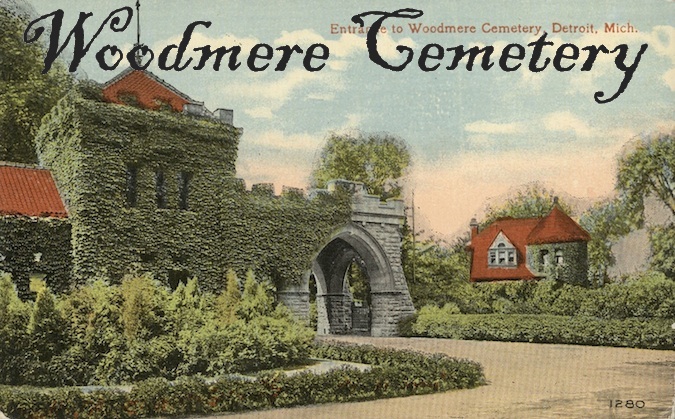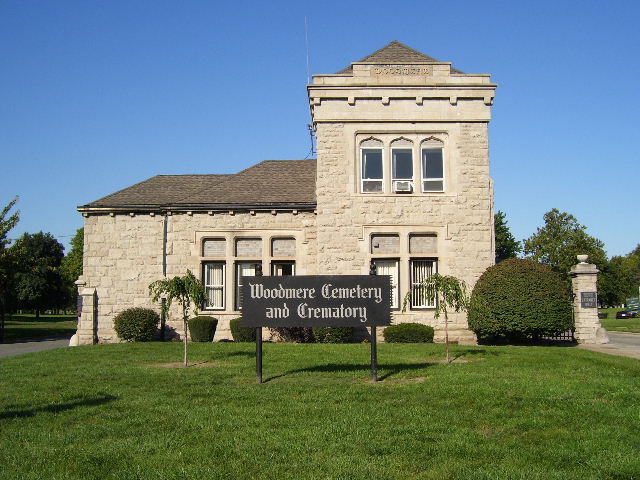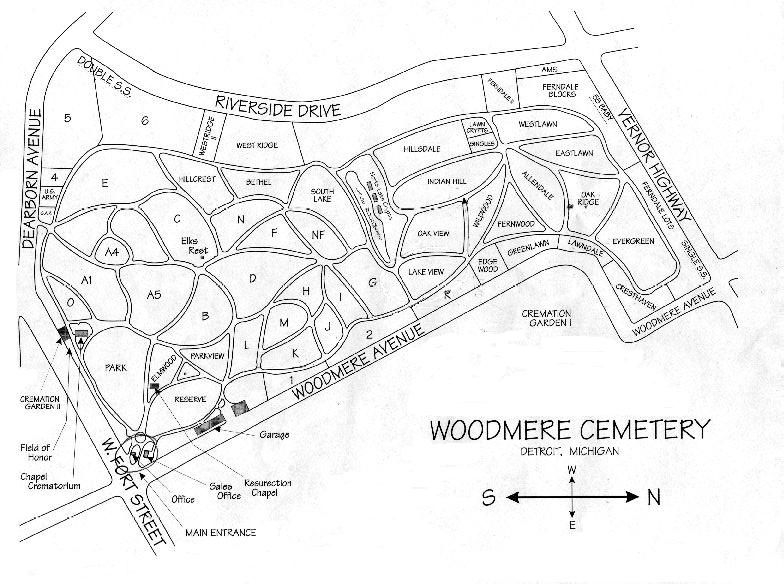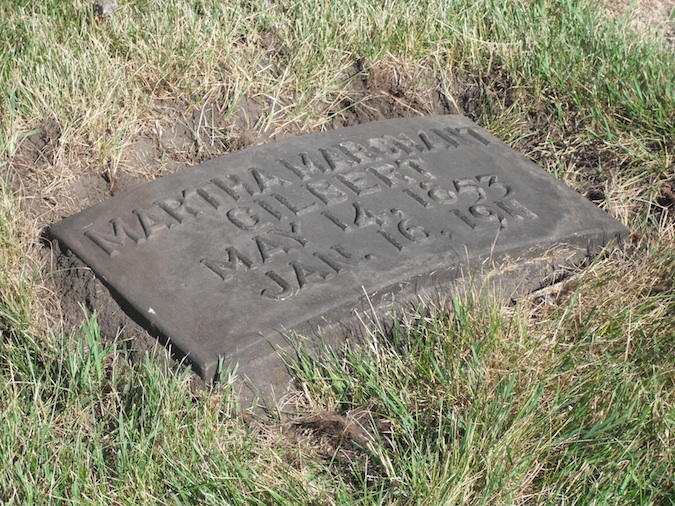 |
9400 W Fort Street
Detroit, Michigan 48209
Wayne County
Telephone: (313) 841-0188
 |
According to Gail Hershenzon's book about the cemetery,¹ Woodmere was founded because it was felt that Detroit needed a rural cemetery, far enough away from the center of town that it would not be in danger of being exhumed and moved like those earlier cemeteries.² Woodmere was so heavily wooded in the beginning that coffins were made out of other trees on the premises. Creeks ran through the property, but they had the unfortunate habit of running red in the spring due to iron in the soil, which must have been a shock to mourners. Of course, during the 20th Century the city grew rapidly with the auto industry and engulfed Woodmere. Its graves are covered in gritty black soot from Ford's notorious River Rouge factory, which polluted the river so horribly that it actually caught fire in 1969 (making it extra-rouge that day, I'm sure). Meanwhile the number of interments at Woodmere expanded with the city's population, to more than 40,000 internments—and it's still growing... however Detroit isn't growing, and as its once magnificent buildings and factories corrode, crumble and erode back into countryside, it's beginning to look like the cemetery might actually outlive the city that created it.
 A map of the cemetery grounds. The Marchant women are in Section B. |
 Detroit's Woodmere Cemetery by Gail D. Hershenzon shows early photographs of the cemetery's 250 acres along with other ephemera that tell of this historic cemetery's rich past. Arcadia Press, c2006; ISBN: 0738541206 |
Woodmere is also the final resting place for Private Eddie Slovik. Originally classified as 4F, his classification was changed and he was forced into combat during World War II. He deserted twice in France, then was court-martialed and sentenced to die before a firing squad in January 1945. He was the only man to be executed for desertion since the Civil War. His wife, Antoinette Wisniewski Slovik, fought to have him pardoned and his body returned to Michigan. Finally in 1987, Ronald Reagan signed an order allowing Slovik's repatriation—several years after Antonette's death—and he was buried beside her... but he has never been pardoned.
Befitting the "Motor City," several titans of the auto industry lie in Woodmere, including Henry Martyn Leland, who formed the Lincoln Motor Company and created the Cadillac, and David Dunbar Buick, who gave his name to a line of cars, but was forced out of his namesake company. The cemetery also contains the remains of the people killed during the 1932 Ford Hunger March.
Not all of the residents are famous, but many are interesting. One is Amelia Buck, buried in an unmarked grave. Her sister kept Amelia's body, convinced she could pray her back to life. She tried to feed her dead sister a little coffee each day and even propped her up in a chair on the porch to watch the Fourth of July parade.
But most importantly to us, Woodmere is the final resting place for Martha Holland-Marchant-Gilbert and her daughter, Marjorie Marchant-Hause. My family had no idea where they were interred, but thanks to the work of Gail D. Hershenzon, we now know where we can visit and pay tribute to those wonderful people who gave us life. Geography and/or remarriage separated Martha and Marjorie from their spouses on Earth, but they cling to each other on the grounds of Woodmere forever.
|
Cemetery Hours
Open: Monday to Friday 9 a.m. to 4:30 p.m. Saturday 9 a.m. to 3 p.m. On Sundays, only by appointment.
NOTES ON THIS PAGE:
¹—Detroit's Woodmere Cemetery: Images of America, by Gail D. Hershenzon. Publisher: Arcadia Publishing (November 8, 2006). 128 pages. ISBN-10: 0738541206 ISBN-13: 978-0738541204. Her webpage, where she can assist you in research and/or an ancestry search, is here.
²—Cemetery Travel by Loren Rhoads, posted on August 29, 2012.
TOP PHOTO: Prelinen postcard, published by Wolverine News Co. of Detroit in 1911, the year that Martha (Holland-Marchant) Gilbert was interred in the cemetery.
 |
